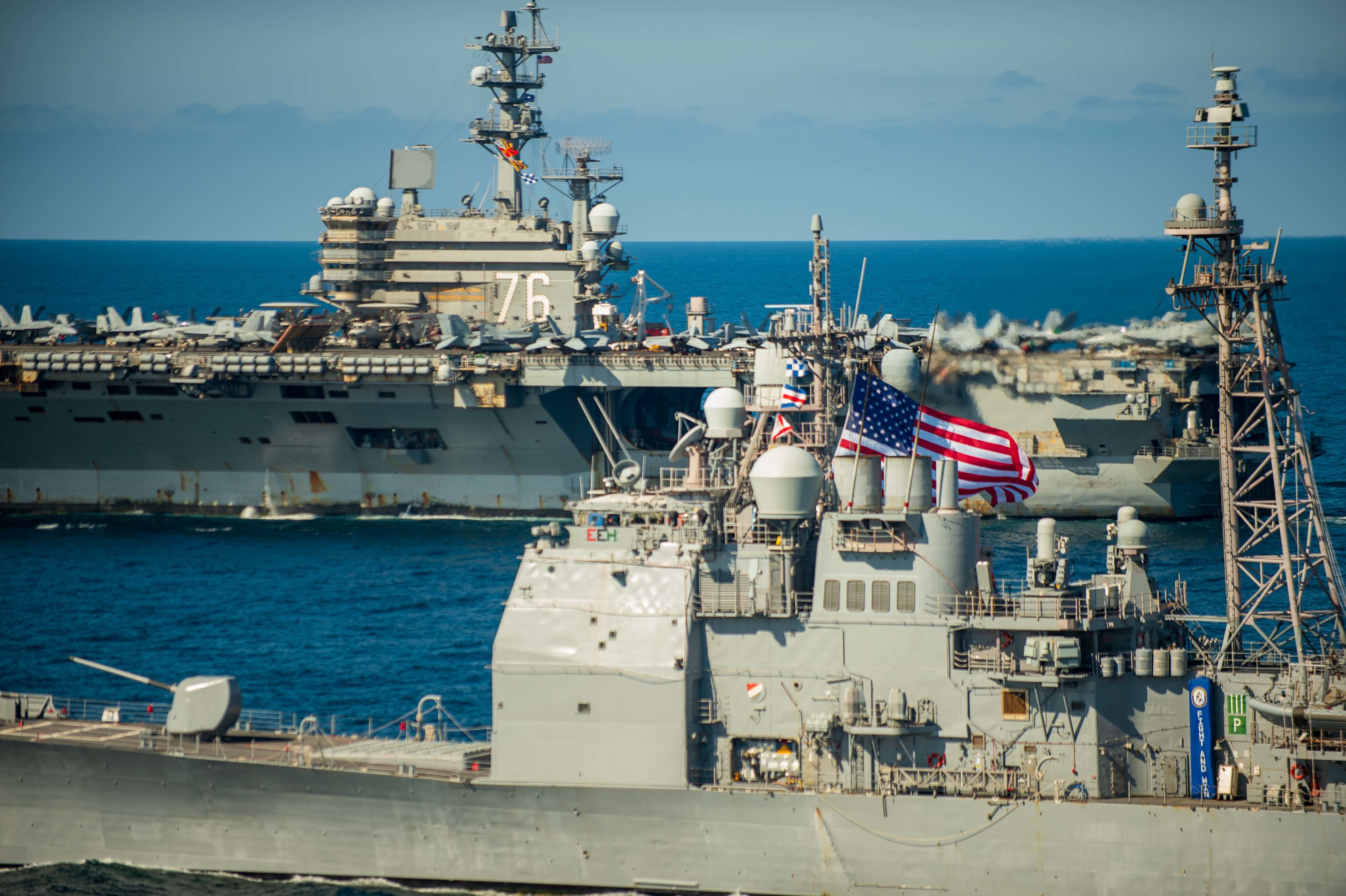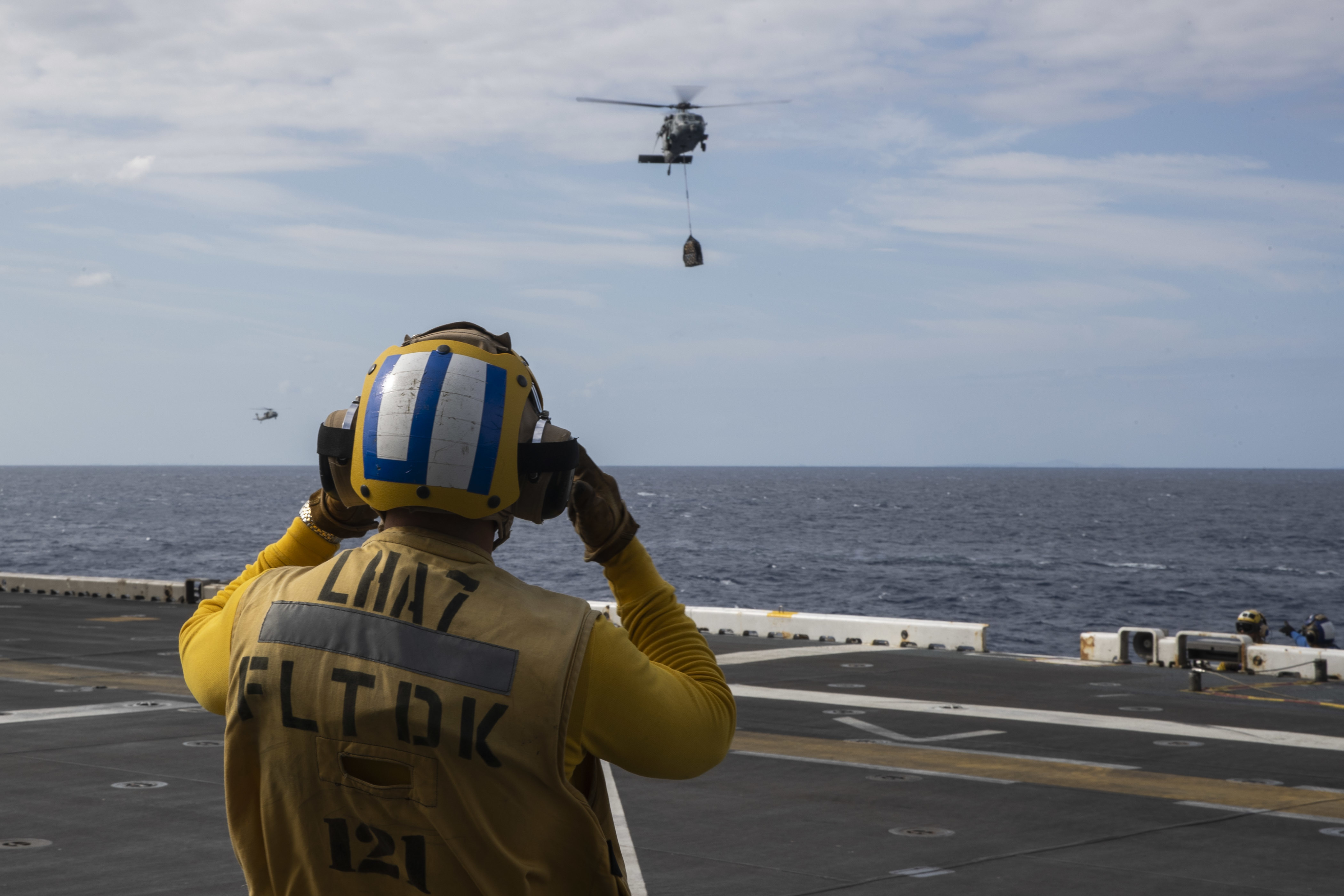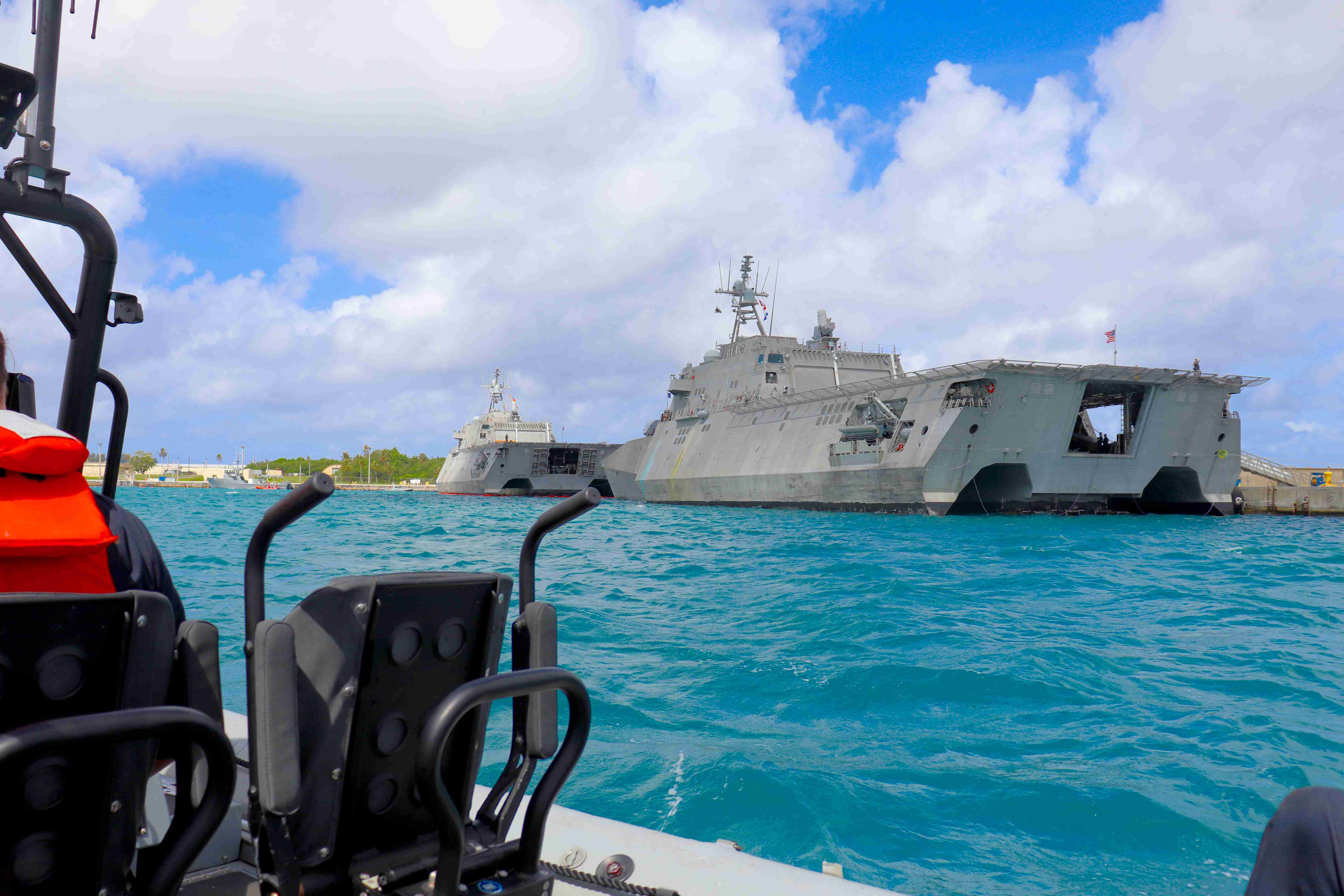
The Ronald Reagan Carrier Strike Group and amphibious warship USS New Orleans (LPD-18) this week operated in the Philippine Sea with the Japan Maritime Self-Defense Force and the Royal Canadian Navy for a joint exercise, U.S. 7th Fleet announced.
The joint U.S. Navy and Marine Corps Task Force 76/3 on Monday started experimenting with concepts for joint operations in the Indo-Pacific region, 7th Fleet said in a news release.
“Conducting operations with both traditional carrier strike group units and expeditionary strike group units gives us the chance to put a high-performing team together to execute and enhance command and control of integrated forces in a complex maritime environment,” Rear Adm. Derek Trinque, the commander of Task Force 76/3, said in the release.
The Reagan CSG includes USS Ronald Reagan (CVN-76) with embarked Carrier Air Wing (CVW) 5, cruiser USS Chancellorsville (CG-62) and destroyer USS Higgins (DDG-76). New Orleans is part of the Amphibious Ready Group with USS Tripoli (LHA-7), with the 31st Marine Expeditionary Unit embarked, and dock landing ship USS Rushmore (LSD-47). Littoral Combat Ship USS Oakland (LCS-24) is also operating with the Tripoli ARG.
Canadian frigates HMCS Vancouver (FFH331) and HMCS Winnipeg (FFH338) are participating for the Royal Canadian Navy, while the JMSDF participated with destroyer JS Kirisame (DD-104). Both Canadian frigates are deployed to the Indo-Pacific under Operation Projection, the Canadian Armed Forces presence operations in the region. Vancouver is part of Operation Neon, which is Canada’s contribution to enforce United Nations sanctions on North Kore. Kirisame is part of the JMSDF’s Indo-Pacific Deployment 2022.

Kirasame and Oakland conducted the bilateral exercise Noble Fusion 22 in the South China Sea, from Oct. 19-21, according to the JMSDF.
“In this bilateral exercise, we improved our tactical capabilities and interoperability with the U.S. Navy. Since departing Japan, JS Kirisame conducted 16 exercises and conducted port calls in 10 countries, mainly Pacific Island countries, over a period of about four months,” Kirisame’s commanding officer, Cmdr. Atsushi Sakata, said in a statement.
“We deepened our friendship, goodwill, defense cooperation, and mutual understanding with the countries of the Indo-Pacific Islands.”
The Navy created Task Force 76/3 after combining the staffs of Task Force 76, 7th Fleet and and III Marine Expeditionary Force’s 3rd Marine Expeditionary Brigade, according to a Marine Corps news release issued earlier this month. The ongoing activities under it are part of Noble Fusion 22.2, which began on Oct.1.
The Task Force is a temporary command meant to test out proof of concepts to better understand how an integrated Navy and Marines Corps command could function, USNI News had previously reported.
Over in Guam, the U.S. Air Force and the Navy conducted an integrated naval mine exercise (MINEX) on Monday with B-1B Lancers from the 37th Expeditionary Bomb Wing based out of Ellsworth Air Force Base, South Dakota that are deployed to the Indo-Pacific region as a Bomber Task Force. The exercise also included sailors from Navy Munitions Command, Pacific Unit, Guam.
“[A] team of 28th Munitions Squadron weapons loaders and Sailors from Navy Munitions Command, Pacific Unit, Guam, armed B-1B Lancers with 21 Mark-62 Quickstrike mines, weighing 500 pounds each,” according to a Pacific Air Forces news release issued Wednesday.
The B-1Bs had arrived at Andersen on Oct. 18 for their Bomber Task Force deployment.

In Brunei on Monday, the U.S Navy and Royal Brunei Navy kicked off the 28th annual Cooperation Afloat Readiness and Training (CARAT) Brunei exercise, which will conclude on Oct. 21, according to a Navy news release on Tuesday. U.S. participants are Littoral Combat Ship USS Charleston (LCS-18), a P-8A maritime patrol and reconnaissance aircraft from Patrol Squadron (VP) 10, Expeditionary Fast Transport USNS Brunswick (T-EPF- 6) with embarked Explosive Ordnance Disposal (EOD) Mobile Unit 5 and 11th Marine Expeditionary Unit, Marine Expeditionary Force (MEF).
On Wednesday, the JMSDF issued three releases related to the JMSDF’s International Fleet Review (IFR) slated for Nov. 6 in Sagami Bay in conjunction with the JMSDF’s 70th Anniversary. The first release said 20 JMSDF ships will participate in the IFR, along with 6 JMSDF aircraft. The Japan Ground Self-Defense Force (JGSDF) will deploy five ground and air assets embarked on the JMSDF ships, while the Japan Air Self-Defense Force will participate with 16 aircraft.
The U.S. Navy and U.S. Marine Corps will participate with five aircraft. The JMSDF has not released full details on specific countries or foreign ships participating in the IFR, though a second news release said that from Nov. 6-7, a search and rescue exercise following the fleet review would take place around Japan involving 30 ships from the JMSDF, Australia, Brunei, Canada, India, Indonesia, Malaysia, New Zealand, Pakistan, Singapore, Thailand, the United Kingdom and the U.S.
Several countries have already publicized their participation in the IFR and the ships they are sending, including Brunei’s plans to send offshore patrol vessel KDB Darulehsan (07). Indonesia will participate with corvette KRI Diponegoro (365), Pakistan with frigate PNS Shamsheer (FFG-252), New Zealand with replenishment ship HMNZS Aotearoa (A11), the Republic of Korea with fast combat support ship ROKS Soyang (AOE-51) and Thailand with frigate HTMS Bhumibol Adulyadej (FFG 471).
Japan disinvited Russia from attending both the IFR and the 18th Western Pacific Naval Symposium, despite Russia’s status as a member of the WPNS grouping, due to its invasion of Ukraine.
The 18th WPNS, with the theme: “Free and Open Oceans: Cooperative Efforts for Next Generation,” will take place Nov. 7-8 in Yokohama, the JMSDF said in a Thursday news release.
Senior naval leaders from member states Australia, Brunei, Cambodia, Canada, Chile, China, Fiji, France, Indonesia, and Japan , Malaysia, New Zealand, Papua New Guinea, Peru, the Philippines, Singapore, Thailand, Tonga, the United States and Vietnam will attend, while Bangladesh, Colombia, India, Pakistan, Sri Lanka and the United Kingdom will be there as observers.





